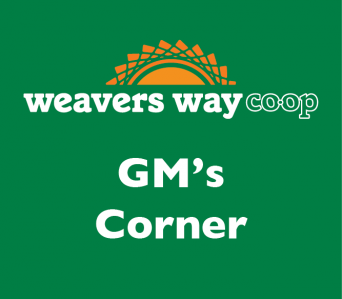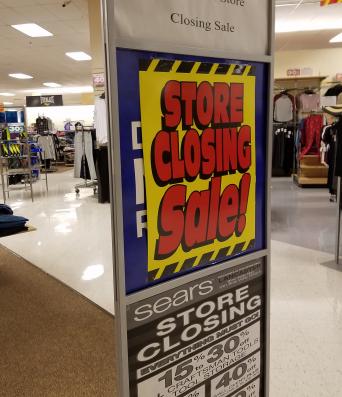
GM's Corner: What We Have That Sears Didn't
It appears the saga of the once-mighty Sears, Roebuck and Company may be reaching its denouement.
Sears has been in its death throes for decades, arguably since 1993, when it dissolved the catalog business that had made it indispensable — the Amazon of its day. In recent years, it survived by selling off business units like Craftsman Tools and Lands’ End and struggled through periodic waves of store closures. (It has closed 126 in 2018 alone.)
As we enter the holiday season, Sears is in bankruptcy and its leaders, speaking somberly as if the company were an elderly relative, have publicly stated their hope to “stay alive until Christmas.” Talk about low expectations.
Most consumers are reacting to the demise of Sears with shoulder-shrugging indifference. We can’t remember the last time we set foot in one of their stores, and we’d be hard-pressed to find one that’s still open. (There’s one in the Willow Grove Mall — I recommend going soon.)
Our apathy toward its end reveals how quickly the retail landscape has changed. Sears was once ubiquitous: As late as 1989, it was the country’s largest retailer, surpassed that year by Walmart. Today it is the 31st-largest, with less than half the revenue of Dollar General.
All of this should come as no surprise. The retail landscape is in a state of upheaval, but the four fundamentals of retail success are unchanged: value, convenience, service and experience. Whether by perception, in reality or both, it’s been a long time since Sears was the least expensive or most convenient way to shop for consumer goods, be it a lawn mower or a pack of gym socks. Customer service was never really bad, but hardly stellar, and the overall shopping experience was, at best, inoffensive.
But there’s something else, too, something less tangible. As online retailing continues to deliver goods and services ever faster and cheaper, American consumers expect something more for making the effort to visit a traditional brick-and-mortar store.
What they’re yearning for is the social concept of “Third Place,” oft talked about here at the Co-op as our new raison d’être. The spaces between our First Place (home) and our Second Place (work or school) are our Third Places, community “living rooms” where we come together regardless of our age, income, ethnicity or political persuasion.
While some Third Places are public spaces — parks, libraries, senior centers, for example — equally vital are the Third Places where retail commerce actively takes place — coffee shops, hair salons, restaurants and the like. And grocery stores, of course.
Given our increased isolation from people who think differently than we do, Third Places are essential fibers in a fraying social fabric. As cable news channels and social media platforms balkanize our society, as evidenced in this most disagreeable election season, it is no wonder that, consciously or otherwise, we’re all seeking safe, agreeable places to gather.
So here at Weavers Way, we find ourselves dividing our time between two priorities. One is striving to be the best retailer we can be, focusing on those four fundamentals of retail success. The second is to deliberately solidify our role as a key Third Place in the communities we serve.
Doing so transcends being a great retailer. It requires executing a strategy that purposefully includes reasons for people to come together. This can be everything from a grand annual event like the Mt. Airy Village Fair to a prosaic product demo on a sleepy Wednesday afternoon.
For this reason, the Co-op continues to invest heavily in what we loosely, and sort of imprecisely, describe as “outreach,” which includes things like new member orientations, demos, workshops and other events.
Whether it’s the weekly $4 Friday community dinner in Ambler, the monthly workshops on everything from making your own kombucha to understanding dogs or classical music, or the regular activism of the clubs and committees associated with Weavers Way, it’s all “outreach” and it’s all integral to our role as a Third Place.
If we execute correctly, people will have lots of reasons to come to Weavers Way that go beyond the chore of grocery shopping. People will look forward to visiting us.
When was the last time anyone looked forward to visiting Sears?
The passing of Sears is a cautionary tale, and a suggestion that the Amazons and Walmarts of our modern times will eventually founder against the jagged rocks of the competitive landscape they seek to dominate. Life goes on — we’re surviving without Woolworth’s, Kodak and the Reading Railroad — but that doesn’t mean we can’t feel a little melancholy.
Fortunately, Weavers Way is strong and, happily, more essential than ever.
See you around the Co-op.

